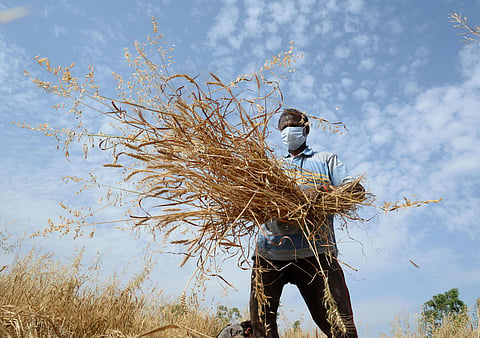

CHANDIGARH: Sowing season is almost upon the farmers in Punjab, but they are a worried lot as an exodus of migrant workers means labour charges is up by nearly twice the usual rates.
Farmers don’t have time as paddy sowing is to begin on June 10 and last for about 20-25 days. Basmati sowing follows and culminates by last week of July end or early August.
Each year, about 6 lakh workers are engaged for sowing paddy and basmati in 23 lakh hectare and 6.2 lakh hectare area. About 2 lakh migrants arrive from UP, Bihar and other states for one month.
But as only about only five per cent of skilled migrant labourers are left due to the COVID lockdown, local workers are demanding anything between Rs 4,500 and Rs 5,500 per acre as against Rs 2,500 to Rs 3,600 per acre in normal times.
Though migrant labourers are willing to return, they want farmers to facilitate transportation which involves inter-state consultations, red tape and high transportation costs.
“We are facing a shortfall of around 40 per cent in labour workforce. Many panchayats have passed resolutions asking farmers not to pay more Rs 3,000 per acre to workers,’’ says Balbir Singh Rajewal, president, Bhartiya Kisan Union, Punjab.
For encouraging farmers grow maize and cotton, Punjab has asked the Centre to raise the Minimum Support Price of maize from Rs 1,760 per quintal to Rs 1,815 per quintal and give incentives to set up maize-based units.
The government anticipates that maize cultivation will go up from 1.60 lakh hectare to 3 lakh hectare this season. Similarly, cotton cultivation is expected to go up from 4 lakh hectare to 5.5 lakh hectare.
Director (agriculture) Sutantar Kumar Airi says overall paddy cultivation area should fall from 29.2 lakh hectare to 26.2 lakh hectare. “Labour shortage is expected to be 15 per cent, but it should be met locally.’’
Punjab has set a target that 25 per cent of paddy seedling transplantation will involve no human intervention.
Farmers are modifying wheat seeders at a cost of around Rs 3,000 for the purpose. Agriculture economist Dr Sucha Singh Gill says, "it will reduce the dependency on labour and also take less time. Area under cotton is expected to increase as less labour in required as compared to paddy.”